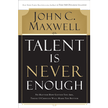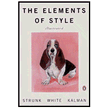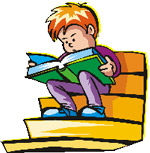|
August
1 ,
2008
Dear
Oklahoma Homeschool Subscribers,
 Only
a few more days until school starts! I'm not getting
done what I wanted to get done this summer, but I am
ready to get back to college! Only
a few more days until school starts! I'm not getting
done what I wanted to get done this summer, but I am
ready to get back to college!
I'm
currently working on a new project that I had hoped
to get completed by time school starts,
but it doesn't look like it's going to happen.
It may be a while yet. Sigh!
This
newsletter includes a couple of reviews, an article
I've written on developing future authors, and a couple
of neat Web sites to bookmark. I've also made a couple
of new forms for you. Check them out in the forms section
below.
Enjoy
the rest of summer and have a wonderful 2008-2009 school year!
Cindy
Downes
Oklahoma
Homeschool Newsletter, August 2008
Index:
What's
New on the Oklahoma Homeschool Website?
NEW!
Updated:
Contests page.
Not on this Web site, but I wanted you to know that
my personal home page is finally up! CindyDownes.com.
It still needs some tweaking and I'm working on new
materials to add to it, but I thought I'd let you see
it before everyone else.
Back
to top
Curriculum/Book
Review:
1. Look
for TRISMS Review
is next month. So far, I love it!
2.
It
Wasn't Much, Ten True Tales of Oklahoma Heroes by
Jana Hausburg.
Although It
Wasn't Much is recommended for juvenile
readers, I thoroughly enjoyed it myself. It makes learning
history as easy as eating candy! The stories are short
and easy to read, but they are packed with adventure,
heroic exploits, historical facts, and inspiration. There
are ten biographies of not-so-well known Oklahoma heroes
such as Rosemary Hogan who was a nurse during World War
I in the Philippines and a POW, Fern Holland, an Oklahoma
Cherokee, who joined the Peace Corp and was killed while
serving in Iraq; Rufino Rodrigues who rescued 150 miners
at the risk of his own life; and Robbie Risner, from
Tulsa, who kept up the morale of his fellow Vietnam POWs
from the time he was captured in 1965 until the time
he was released in 1973.
Included in each chapter is more information about the
setting of the story, definitions of difficult terms,
suggestions for additional reading, a list of Internet
resources related to the topic, and a list of places
to visit in Oklahoma that compliment the story. And finally,
on the Web site, there are additional pages of study
resources, discussion questions, writing exercises, and
teacher resources. A lot for your money!
For
more information or to purchase, see the publisher's
Web site: Forty-Sixth
Star Press.
3.
Projects You Can Build Yourself series.
 In
the process of working on the American History course,
I discovered a series of books which include projects
for the study of American History. The series includes:
Great
Colonial American Projects You Can Build Yourself,
Great Civil War Projects You Can Build Yourself In
the process of working on the American History course,
I discovered a series of books which include projects
for the study of American History. The series includes:
Great
Colonial American Projects You Can Build Yourself,
Great Civil War Projects You Can Build Yourself , Great Pioneer Projects Projects You Can Build Yourself , Great Pioneer Projects Projects You Can Build Yourself , and
Great World War II Projects You Can Build Yourself , and
Great World War II Projects You Can Build Yourself . .
Each
of these books could be the basis of a unit study
on its own. For instance, in the Colonial projects
book, it not only includes lots of hands-on projects
to do related to the topic, but also an overview of
Colonial life, a timeline of the colonies, and a brief
introduction to the early colonial settlements. You'll
meet all the major characters, and learn some vocabulary
as well. A few of the projects include making
your own Wampum, building a miniature Wattle-and-Daub
house, making dye from marigolds, and creating a tin
plate. There are over 40 projects included in the book.
If you like hands-on projects, these books are for
you!
Back
to top
Teaching
Without Textbooks -
1. I am reading the book, Talent
is Never Enough by John
Maxwell, and came across some statistics that will interest
those of you who are homeschooling teenagers. On page 2,
Maxwell states:
-
 More
than 50 percent of all CEO's of Fortune 500 companies
had C or C- averages in college. More
than 50 percent of all CEO's of Fortune 500 companies
had C or C- averages in college.
- Sixty-five
percent of all U.S. senators came from the bottom half
of their school class.
- Seventy-five
percent of U.S. presidents were in the Lower-Half Club
in school.
- More
than 50 percent of millionaire entrepreneurs never finished
college!
So, next time you think your average child is never going
to amount to anything, remember these statistics! And read
this book!
2.
Developing Future Authors
Do
you have a potential author in your homeschool? Do you
find that your children can fill in all the English textbook
pages but still can’t write an acceptable report?
Whether your child is a budding author or just needs to
learn practical writing skills, here are some ideas that
will help make a difference in your writing program.
A good place to start is your local bookstore (or library).
Pick up books that are written for professional writers.
What better way to learn to write than to study what the
masters are using! (You will need to be careful to watch
the content.) Two of my favorite resources for writers
are  Elements of Style Elements of Style by Strunk and White and 100
Ways To Improve Your Writing by Gary Provost. Each of these
resources will not only help you to teach your children
how to be a great writer, but writing mechanics and grammar,
as well. by Strunk and White and 100
Ways To Improve Your Writing by Gary Provost. Each of these
resources will not only help you to teach your children
how to be a great writer, but writing mechanics and grammar,
as well.
100 Ways To Improve Your Writing covers: getting ideas,
writing strong beginnings, avoiding wordiness, developing
style, making your writing interesting, and editing yourself.
I love this quote from pg. 116, "Prefer good
writing to good grammar. Keep in mind that good grammar,
even perfect grammar, does not guarantee good writing
any more than a good referee guarantees a good basketball
game…There
is nothing virtuous about good grammar that does not work.
Your goal is good writing. Good grammar is only one of
the tools you use to achieve it."
Or how about this one from page 63, "You should
try to write complete sentences. However, if your high
school English teachers told you that all incomplete
sentences were unacceptable, they were wrong. Good writing
often contains incomplete sentences. The incomplete sentence
is a useful tool. Used wisely it can invigorate the music
of your words. Like a chime. Or the beat of a drum."
In spite of these precautions against getting caught up
in the perfect grammar cycle, there is plenty of information
on how to make your writing better because of good grammar.
Mr. Provost covers the importance of using the right tenses,
how to use possessive cases properly, making verbs agree
with subjects, avoiding dangling modifiers, being consistent
in your use of pronoun form, avoiding split infinitives,
and using proper punctuation.
See if you can determine what’s wrong with these
sentences: (1) My families dogs don't eat table scraps.
(2) In drawing the picture, his wife was used as the model.
(3) One of the nicest memories Linda has are those memories
of her wedding. (4) After one has written a paper, they
should take a break. (5) She wanted to quickly run the
race. If you weren’t sure of the answers, 100
Ways To Improve Your Writing will help you find out. And the
best thing is that all this grammar can be learned in a
way that makes sense instead of doing it merely to fill
in the blanks. Just have your students apply what they
learn from books such as this to their daily writing assignments,
and writing mechanics will take on new meaning.
Elements of Style covers rules of usage, principles of
composition, matters of form, commonly misused words
and expressions, and commonly misspelled words. This
is the standard style guide for the writing industry.
You can even access the original Elements
of Style on
the Internet.
 Other
choices of "real books" for budding authors
are: On
Writing Well Other
choices of "real books" for budding authors
are: On
Writing Well by
William Zinsser (a classic for authors) and Building
Believable Characters by
William Zinsser (a classic for authors) and Building
Believable Characters published
by Writer’s Digest Books (a great resource for
teaching character development). As soon as your children
are ready to write some historical fiction, check out: Writer's
Guide to Everyday Life in the Middle Ages,
and others in this series (Colonial America, 1800s, Phohibition
and WWII). They are currently out of print, but used
copies are available. These
neat books give you everything you need to know to write
about these historical periods including: type of dress,
occupations, food, government, schooling, etc. And they
make excellent resources to have around for history reports,
too! published
by Writer’s Digest Books (a great resource for
teaching character development). As soon as your children
are ready to write some historical fiction, check out: Writer's
Guide to Everyday Life in the Middle Ages,
and others in this series (Colonial America, 1800s, Phohibition
and WWII). They are currently out of print, but used
copies are available. These
neat books give you everything you need to know to write
about these historical periods including: type of dress,
occupations, food, government, schooling, etc. And they
make excellent resources to have around for history reports,
too!
Give it a try! Put your grammar textbook down for a week
or two, obtain a copy of 100 Ways To Improve Your
Writing,
and begin an adventure that could lead your child into
a career in writing!
2.
And don't forget! When you're done, be sure to add what
your children did for writing to your copy
of The
Checklist!
Back
to top
FREE
Forms:
1.
NEW! US
and World History Scope and Sequence for multi-level
Unit Studies. (You'll need to print this on
LEGAL size paper.) Use this form to plan your US and
World History. I recommend picking a grade based on
your oldest child; then put the rest of the children
in the same subjects based on their age. If they are
in elementary school, use the topics from grades 1-6.
If in 7th and above, use the topics from 7th and above.
For instance, if I have a child in 9th grade, one in
7th , and one in 2nd grade, I would pick the 10th grade
topics for both my 10th and 7th grader. I would then
pick the 3rd grade topics for my 2nd grader. This way,
we would all be on the same topics, but my 2nd grader
would not cover everything the older children do and
would spend more time on fewer topics. You would be
able to read aloud books together, do hands-on projecs
together, and then assign extra reading, composition,
and other individual work based on the grade level.
I hope you like it!
2.
NEW! State and Local Officials Worksheet:
Students can use this form to record your state and local
officials.
Back
to top
Oklahoma
Information and Resources:

1.
Oklahoma History Online by
Cindy Downes. An online, multi-level curriculum for
teaching Oklahoma History.
2.
Oklahoma Scrapbook: A Travel
Guide and Memory Book for Exploring Oklahoma by
Cindy Downes.
3.
For more info and learning materials about Oklahoma
history, check my website at: http://www.oklahomahomeschool.com/teachOKH.html
Back
to top
Internet
Resources: 
1.
Looking for a book to go along with your unit study?.Try
the Database
of Award Winning Literature. Here you can search
for a book by age, grade level, historical period,
genre, keyword and more. You'll want to bookmark this
one!
2. Vocabulary
Practice -
increase your vocabulary by using this resource everyday!
Another good one is Vocabulary.com.
3. Want
to know what type of vocabulary your child will read
in a book? Try Vocabulary
Classic Texts. Create a vocabulary list
and learn the words as you read the book!
Back
to top
Quote:
"Education
would be so much more effective if its purpose were to
ensure that by the time they leave school every boy and
girl should know how much they don't know, and be imbued
with a lifelong desire to know it." — Sir
William Haley
Back
to top
Please
feel free to forward this to anyone who may be interested.
Please forward in it's entirety.
If
you'd like to be added to the Oklahoma Homeschool Newsletter
mailing list, please email back with "Subscribe"
in the subject line, along with your city and state or country
and how long you have homechooled.
COPYRIGHT
NOTICE: This newsletter is ©Copyright
2007 by Cindy Downes. All rights reserved.
PRIVACY
POLICY. Your name and email address will always
remain completely confidential. I do not sell, loan, or share
any subscriber or customer information for any reason. Your
information will never be used for any purpose other than
delivery of my e-newsletter and to occasionally inform you
of updates to the Oklahoma
Homeschool website.
If
you want to be removed from this mailing list, please
send a blank email with the word "unsubscribe" in
the subject line.
Have
a great day!
Cindy
Cindy
Downes
OKLAHOMA HOMESCHOOL
Website: http:www.oklahomahomeschool.com
Email: newsletter@oklahomahomeschool.com
Blog: http://www.homeschoolblogger.com/EmptyNestMom
Have
you seen The Checklist? It's
an assessment tool, lesson planner and K-12 Recordkeeper created
for Christian Home Educators: http://www.oklahomahomeschool.com/checklist.html
Oklahoma
History Online is
now available! Check it out at: http://www.oklahomahomeschool.com/okhist.html
Back
to top
. |
|